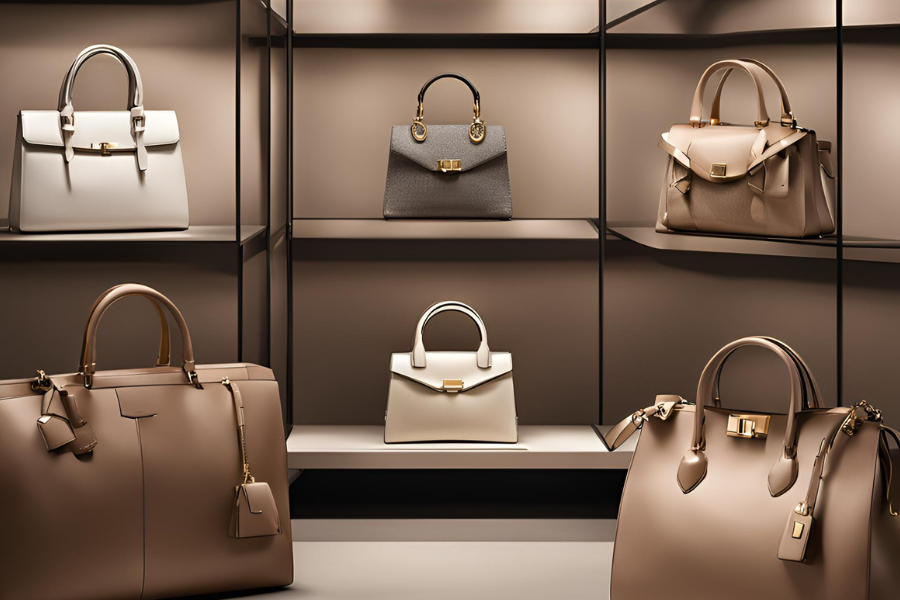Sustainability in the Luxury Leather Sector: A New Era for Companies?

Sustainability has increasingly emerged as a strategic priority for many companies, especially in the luxury leather goods sector. This shift is not only a response to growing environmental concerns, but also an opportunity for companies to differentiate themselves in an increasingly competitive market. However, there are still few companies that truly embrace sustainable and innovative practices. In this article, we will explore how some luxury leather goods companies are embracing sustainable practices, focusing on low-volume production and zero waste during the prototyping phase.
Sustainability as a Mission
For some luxury leather goods companies, sustainability is not just a passing trend, but a core mission. Unfortunately, these companies are still a minority in the industry. However, those that have made sustainability a strategic goal are adopting innovative approaches to reduce their environmental impact, promoting ethical and responsible production methods.
Reducing Waste: The Prototyping Phase
One of the most critical aspects of leather goods manufacturing is the prototyping phase, where initial models for new products are created. Traditionally, this phase can result in significant waste of materials. However, few companies are now adopting practices that aim to minimize this waste.
- “Low-Volume Production”: Companies that follow this approach limit the number of prototypes they produce. Instead of creating numerous samples to test a design, they focus on a small number of models. This approach not only reduces costs, but also minimizes the use of materials and resources needed.
- “Recycled and Innovative Materials”: Some companies are investing in recycled materials or eco-friendly alternatives for prototype production. These materials not only reduce environmental impact, but can also offer new creative opportunities.
- “Utilization of Technology”: Adopting advanced technologies such as 3D printing allows companies to create prototypes quickly and with less material usage. This technology allows for testing innovative designs without the usual waste of resources.
Examples of Excellence
- Gucci: The brand has launched initiatives to reduce the environmental impact of its production, including creating a collection that uses recycled materials and reducing waste in prototypes.
- Hermès: Known for its quality craftsmanship, Hermès is investing in sustainable practices in production, including optimizing prototyping processes to reduce waste. However, its adoption of sustainable practices is still limited.
- Stella McCartney: Although not exclusively in the leather goods sector, Stella McCartney is an example of how the use of innovative and sustainable materials can redefine the concept of luxury, promoting responsible fashion. Her influence is significant, but her approach is not yet the norm in the sector.
- Lotyere: It has been able to act on the concept of sustainability since its birth, with an optimization path that first works on the Prototyping of the product with the use reduced to a minimum of Leather and materials that are difficult to sustain. At the same time, the commercial sales system also provides for a strong reduction in the Co2 reduction area with product presentation processes in a digital and locally targeted way. The same logic is also used in the e-commerce sales area where the return, intentionally paid as well as fast delivery, to sensitize the consumer as much as possible in the rational and thoughtful purchase with a view to preserving the environment that surrounds us.
Although not exclusively in the leather sector, Stella McCartney is an example of how the use of innovative and sustainable materials can redefine the concept of luxury, promoting responsible fashion. Her influence is significant, but her approach is not yet the norm in the industry.
The Importance of Transparency
In addition to sustainable practices in production, transparency is key. Today's consumers are increasingly conscious and want to know the origin of the products they buy. The few companies that clearly communicate their sustainability initiatives and show their commitment to waste reduction build trust and loyalty among customers.
Conclusion
The future of luxury leather goods is intrinsically linked to sustainability. Companies that embrace this philosophy, investing in innovative practices and minimizing waste, not only contribute to a healthier planet, but also position themselves as leaders in an evolving market. However, it is crucial to recognize that these practices are still adopted by a minority. With increasing consumer attention towards ethics and sustainability, companies that are committed to a responsible approach to their production have the opportunity to build strong and lasting brands.

